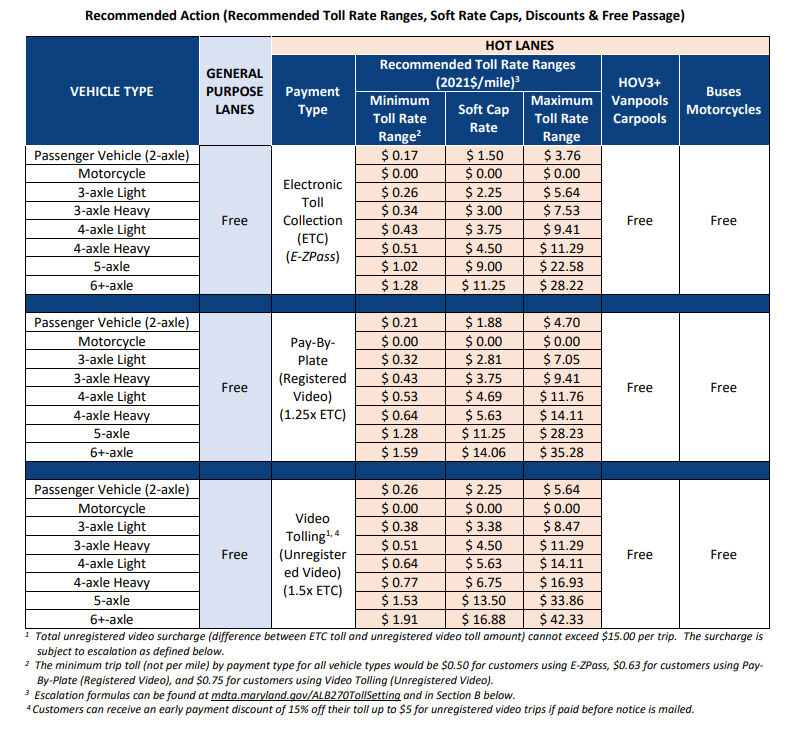Drivers looking to escape backed up traffic could opt for a way out if they’re willing to pay anywhere from 17 cents to $3.76 a mile as they travel from the American Legion Bridge up Interstate 270 to Gaithersburg.
The Maryland Transportation Authority Board voted unanimously to approve the “dynamic” pricing plan for proposed toll lanes that are part of Maryland Gov. Larry Hogan’s stated plan to break gridlock in the region.
Prices would vary depending on whether drivers use the E-ZPass, Maryland’s “pay by plate” arrangement, or whether they are subject to video tolling. The prices would also shift during a commute with traffic conditions. Prices would go up when congestion is especially acute.
Some users could take the toll lanes without charge. Under the plan, carpools with three or more people, motorcycles and buses would travel free in the express lanes.
Larger vehicles, like tractor trailers, would pay tolls at a higher rate, with maximum rates topping $28.22 a mile for E-ZPass holders driving vehicles with six or more axles.

Maryland Transportation Secretary Greg Slater told members of the Board, “I think the HOV-3 that is in place in Virginia — the data shows it has really influenced the behavior — travel behavior.”
Slater said the goal is to achieve the same results, with more people choosing carpools and other ways to avoid congested roadways.
During Thursday’s MDTA Board meeting, Carl Chamberlain, a project manager with the division of Programming and Project Development, detailed some of the responses in the public comment section of the MDTA’s report. Chamberlain told the Board: “The majority of comments as expected, came from Montgomery County, that’s where the project is proposed to be so that’s to be expected.”
Chamberlain said the majority of respondents travel within the project area three times a week.
“It’s good to know that the feedback that we’re getting is specific to the people in that area,” he said.
Overall, Chamberlain said there were common themes in the comment section, with “general opposition to tolls, and that the recommended toll rate ranges were too high.”
The tolling scheme contains a number of variables, from the “minimum toll rate range” to something called a “soft cap” rate and a “maximum toll rate range.” The minimum toll rate is the lowest toll rate per mile and is intended to cover the cost of the tolling process. The “soft rate cap” kicks in only when a number of conditions are present, and will “always be lower than the maximum toll rate.”
Maryland transportation officials have said the average toll for most drivers would most likely fall between $3 to $5 for a 7-mile stretch along the route.
Comments posted to the MDTA included those who said “employers should be incentivized to encourage/promote teleworking, thereby getting cars off the road in the first place.”
Another commenter wrote, “No toll lanes should be built.”
Still another wrote of the pricing, “The tolls are insanely excessive.”
The express toll lanes are part of Hogan’s larger proposed road project, designed to break the bottleneck at the American Legion Bridge and increase travel speeds along the I-270 corridor.
The tolls approved on Thursday are part of Phase 1 of the project, which is still in the design phase. Construction is likely years away.








